Single planting
Contrary to popular belief, hosta can be not only part of a composition, but also a single plant. In this case, it is worth choosing large species that reach a height of 60 cm or even more, as they look quite self-sufficient away from other plants.
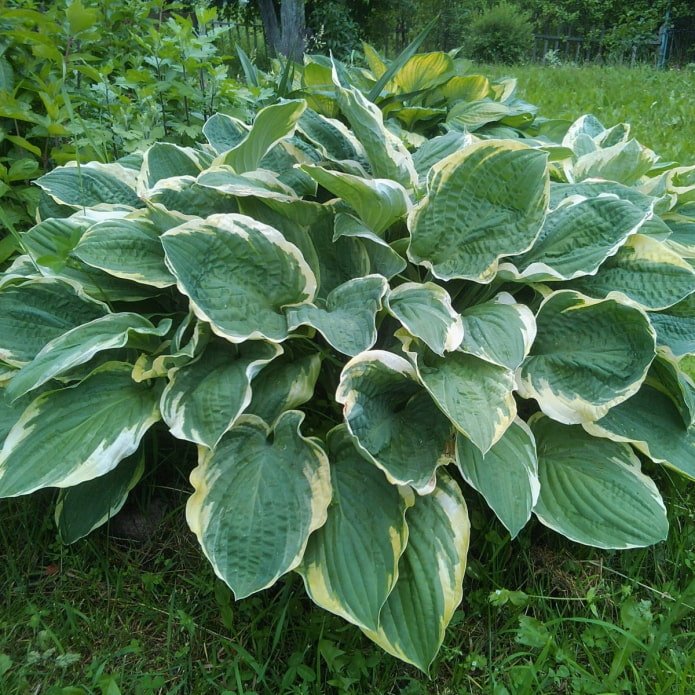
In rockeries
Hosta looks no worse in compositions, for example, alpine slides or rock gardens – rockeries. In this case, you should choose species that are small in size, no more than 20 cm in height. However, this is not a universal piece of advice, since everything depends on the specific composition, its scale and the sizes of the stones used.
Please note! The rock garden should be located in the shade or partial shade. Otherwise, the stones will heat up too much in the sun, which will lead to the death of plants, including hostas.
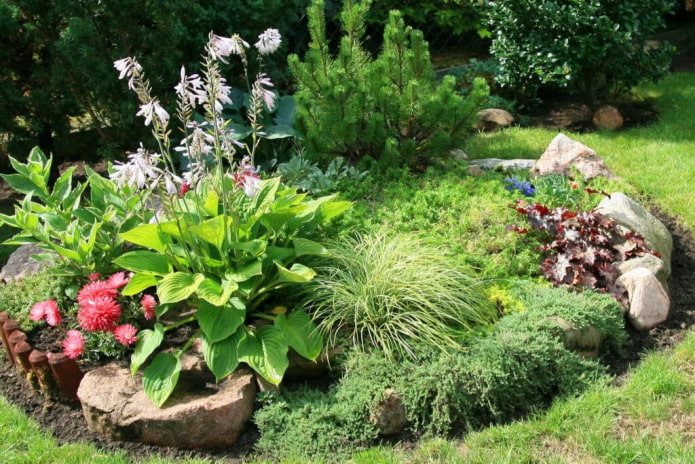
Near water bodies
Medium-sized hostas, from 30 to 45 cm high, are great for decorating small water bodies on the site. Moreover, they take root well in the environment of other moisture-loving plants.
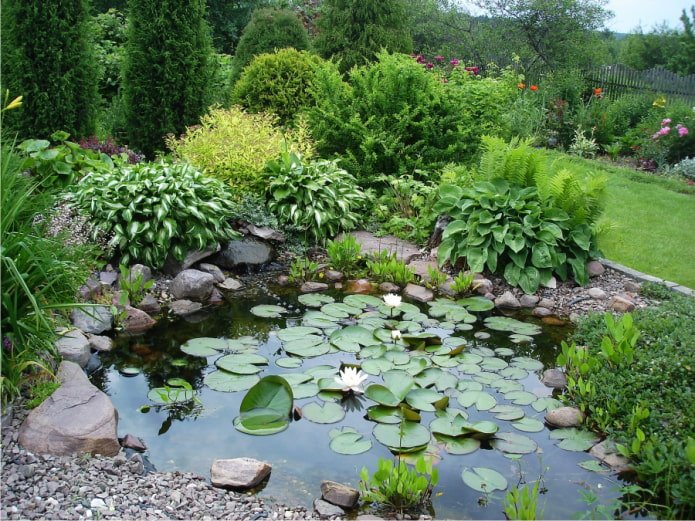
Along paths
Hostas can also be planted along paths. This will help smooth the transition between artificial elements, such as stone tiles, and other plants.
Tip: Do not plant hostas with large leaves too close to paths. Otherwise, when it rains, the leaves may end up on the road under the weight of the water, where they may be accidentally damaged by a passerby.

In flowerbeds
Hostas look great not only in rockeries, but also in purely plant compositions. For example, in flowerbeds, hostas can be planted in the outer row so that the brightest plants are in the center. The resulting green ring of hostas will highlight flowers or other plants due to the contrast, freeing the composition from an excess of bright colors.
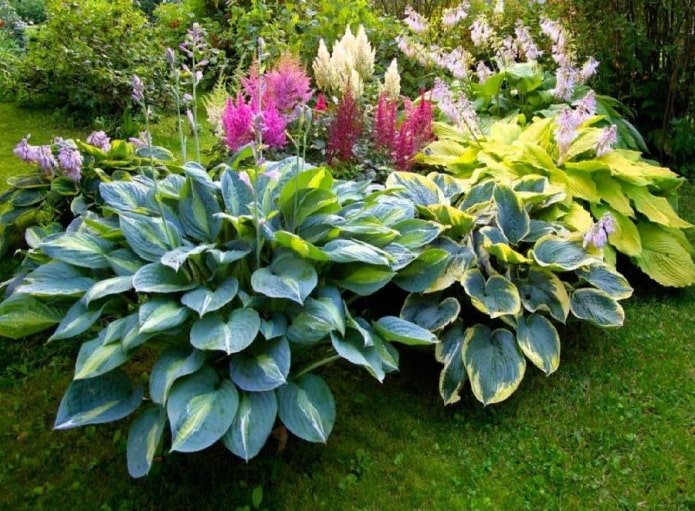
Along the walls of the house
Hostas are often used to mask the less attractive parts of a building, such as the bottom of a wall, a blind area, or a gutter. In this case, they are planted in front of the elements to be masked, as close to them as possible. Giant hostas are best suited for these purposes, reaching or even exceeding 70 cm in height.
Important! Sometimes such aspirations for beauty lead to violations of building codes, for example, to a narrowing of the blind area. This should not be done! Beauty is, of course, important, but these standards are not written just like that.
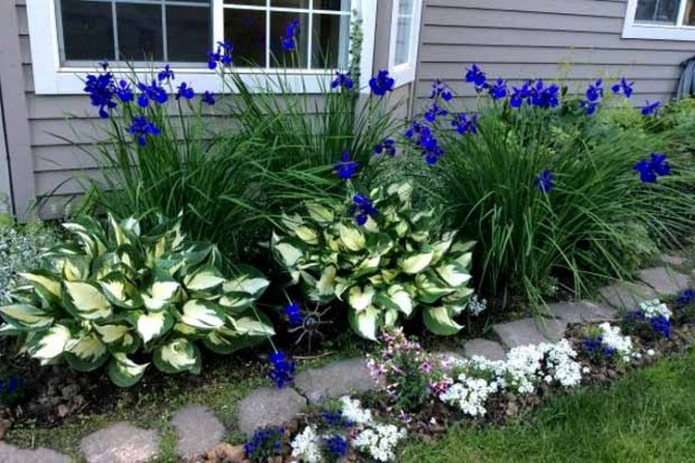
For delimiting zones
In addition, hosts can be used to highlight and delimit individual zones on a site. For example, by planting a row of medium or several large hosts, you can separate the recreation area from the rest of the site. Of course, such plantings can hardly be called a full-fledged green hedge, but in this case the task is to “mark” and designate the allocated territory.
Note. If you still want to create a green hedge, then you can add a number of larger plants to the hosts. From personal experience, I can say that small conifers, such as juniper, are great for this.
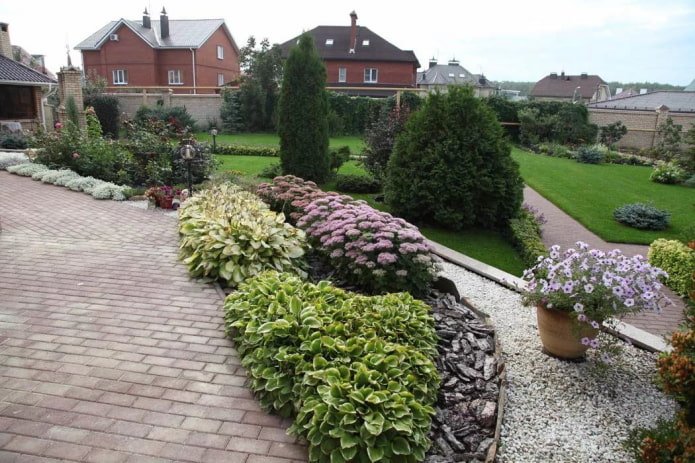
In pots
Don’t forget that small and medium-sized hostas can be planted in a regular pot. In this case, they can be moved at least every day, choosing the best place for them according to your mood. At the same time, nothing prevents you from decorating not only the plot, but also the rooms of the house with them.

As you can see, you can place hostas literally anywhere. The most important thing is to find out its maximum height, shape, leaf size and shade before choosing a plant. It is even easier to propagate the hosta you like by cuttings. This way you are guaranteed to get exactly the plant you wanted initially.
Now reading:
- 15 creative ways to use burnt wood in the country to decorate your home and plot.
- Bed at a height: more than 40 photos of interiors and modern design solutions.
- How to decorate a bathroom on a budget? 7 best affordable solutions.
- Your Ultimate Guide to BMW Pre-Owned Vehicles
- Blue Living Room: 45 Interior Design Ideas and Color Combinations.